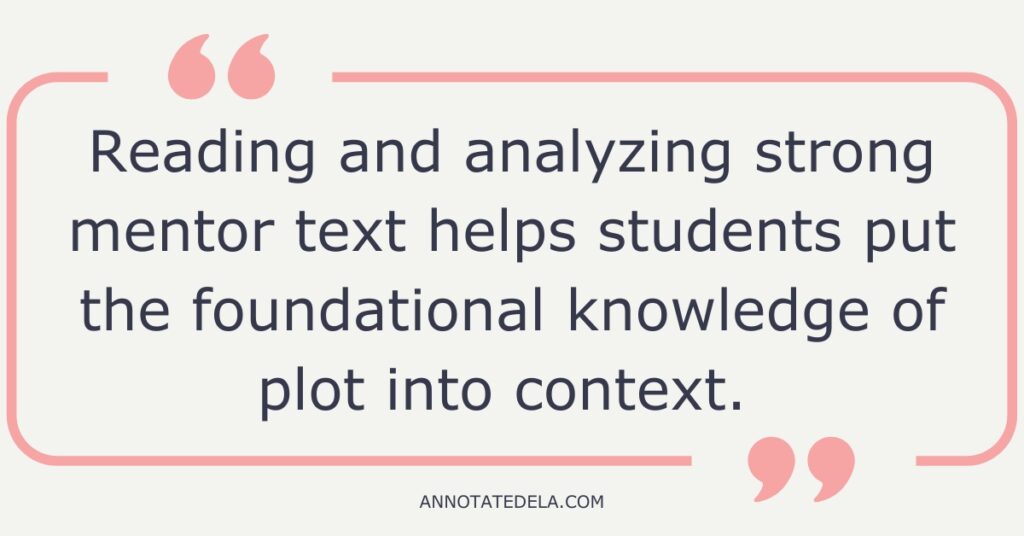Teaching narrative writing in middle school is a remarkable opportunity to nurture young minds. Encouraging them to weave words into captivating tales and find their unique voice in the process.
It is a time when students are beginning to discover their identities, navigating the complexities of adolescence, and yearning to express themselves authentically. By introducing them to the art of storytelling, we empower them to become skilled communicators, critical thinkers, and empathetic individuals.
This blog post and the series of blog posts that follow are designed as a comprehensive guide. Crafted with the middle school classroom in mind. Whether you are a seasoned educator seeking fresh ideas or a novice teacher eager to embark on this writing adventure, this guide will equip you with the tools to guide your students towards becoming proficient storytellers.
Download the Narrative Scope and Sequence for a detailed guide on how to guide students through the narrative writing adventure.

Don’t Start with Narrative Writing
It sounds counterintuitive, but having students jump into writing a full-blown narrative is challenging and not productive. It is important for students to understand the basic elements of plot and story structure, which shows how those elements work together to make a good story.
To begin, start with what students know. This includes getting students talking about what makes a good story.
Next, provide prompts that get students thinking about stories and telling stories. Ask them to write about:
–a time they overcame a fear
–a time they were embarrassed
–had the best or worst birthday
Not all stories are personal, but starting with what students know puts the focus on the story telling and not the story.
Having students write can be as simple as a bell ringer or a quickwrite – provide time to tell the story and talk about elements of a good story.
Teach the Structure of Narrative Writing
The necessary elements for a good story are plot, which includes exposition, inciting incident, rising action, climax, falling action, and resolution. This also includes characters, setting, conflict, and theme.
Providing students with notes or a reference sheet for these basic elements will help them when analyzing mentor texts and writing their own narratives.
Students also need to understand that a good story goes beyond the basic elements of plot.
Students need to know that:
-stories have a beginning, middle, and end
-setting creates a context for time and place
-writers control time and pacing in a story
-conflict moves a plot forward and is an opportunity for a character or characters to learn a lesson and/or make a change.
-point of view impacts a reader’s experience
-theme is a universal message that reveals what the story is “really” about

Mentor Text to Teach Narrative Writing
Now that students have foundational information on plot and story structure it’s time to read and unpack mentor text. Short stories and even picture books make perfect mentor texts for narrative writing.
Spend time analyzing plot, characters, point of view, conflict, and theme to provide context for the students’ learning.
Have students complete plot diagrams as they analyze the story structure.
Don’t stop there; guide students through activities and discussions to analyze and notice other elements of the structure of a story. Reading and analyzing strong mentor text helps students put the foundational knowledge of plot into context.
Teaching narrative writing in middle school extends beyond the classroom. It is a life skill that equips students with the means to express themselves effectively, cultivate empathy, and become active participants in the world of literature. Through the power of storytelling, we encourage our students to become authors of their own narratives, fostering their imagination, critical thinking, and communication skills.




4 Responses